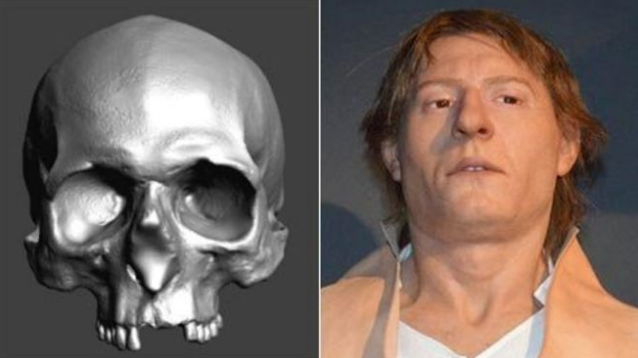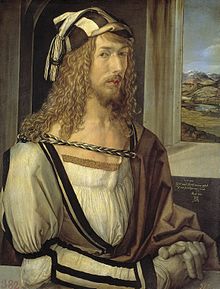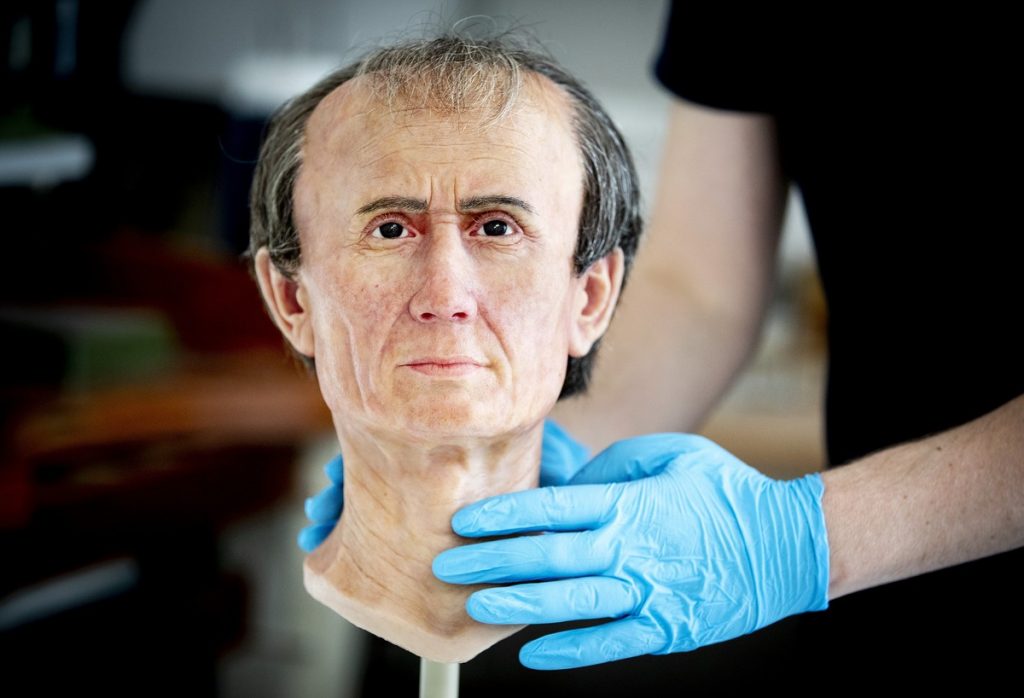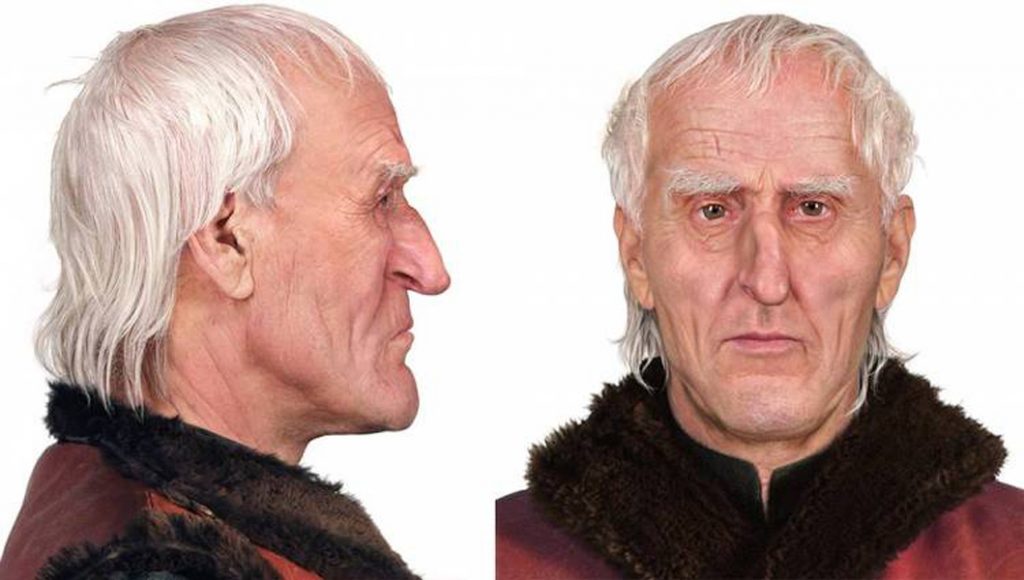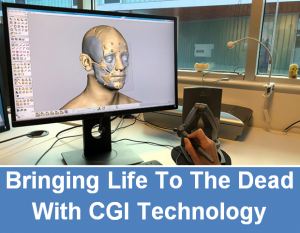 Once upon a time, when a person died… they stayed dead. Sure, they were remembered through paintings, etchings, busts and even death masks, but their long-gone images remained distorted likenesses of how they truly appeared in life. That’s no longer the case, as modern Computer Generated Imagery (CGI) has the uncanny ability to eerily bring the dead back to life.
Once upon a time, when a person died… they stayed dead. Sure, they were remembered through paintings, etchings, busts and even death masks, but their long-gone images remained distorted likenesses of how they truly appeared in life. That’s no longer the case, as modern Computer Generated Imagery (CGI) has the uncanny ability to eerily bring the dead back to life.
Images created with CGI technology are so good that it’s nearly impossible to tell what’s real and what’s invented inside a computer. Today, computer generated images are commonplace. You see them everywhere around you. From blockbuster movies like Toy Story and Iron Man to still-framed Amazon ads that capture your buying attention, you’re constantly bombarded with CGI impressions.
But, all CGI technological projects aren’t aimed at entertaining you or exploiting your bank account. The forensic world slowly endorsed computer generated imagery since its inception. CGI technology was a perfect fit for reconstructing faces on skulls found with decomposed human remains.
Once forensic anthropologists teamed with computer scientists specializing in CGI technology, the field expanded. It wasn’t long before specialized companies like Face Lab at Liverpool John Moores University developed cutting-edge techniques to move beyond realistically recreating facial recognition from bare bones to analyzing historical works depicting famous people.
Recently, the team at Face Lab released stunningly-real images of Cleopatra, King Tut, Nefertiti, Shakespeare, Bach, George Washington, Mary Queen of Scots, Saint Nicholas and many other high-profile historical people. Yes, even the real Santa Claus has been brought back to life with CGI technology. Here’s a look at how Face Lab does it and some samples of their deadly depictions.
Technology Behind Computer Generated Imagery
You’d think computer generated imaging is a recent forensic and technological breakthrough. Not so. CGI first hit the public domain via the movie business with Westworld in 1973, Star Wars in 1977, Jurassic Park in 1993 and then in 1995 when Toy Story made Woody and Buzz come alive. Now, two decades into the 21st century, it’s fair to say that virtually every TV and big screen production uses CGI for special effects. Forensic science took awhile to adopt the digital techniques.
Would it surprise you to know the basic principle behind computer generated imagery showed up in the 16th century? It’s called ray tracing. A brilliant German painter/printer by the name of Albrecht Durer discovered an artistic technique of following light rays from the human eye back to the object rather than the normal method of human perception where the eye captures a light ray blast. Durer didn’t have a computer, but his revolutionary technique was so successful that it influenced Renaissance Masters like da Vinci and Raphael.
In computer graphic terms, ray tracing is a rendering technique for generating images by tracking a light ray’s path from the viewer’s vantage point back through a pixel and onto a virtual object. The CGI designer works with shape, color, texture and light levels on the object to give it life-like realism once the image is transferred back to the eye. In a sense, it’s fooling the brain to see non-real objects as real.
This sounds simple, but it’s incredibly complicated. Ray tracing to build computer generated images is also exhaustively time-consuming. Images built through ray tracing also require mathematical expertise in using trigonometry to build algorithms that account for light ray effects. Computers are the key to managing huge information packages and pull the entire CGI process together.
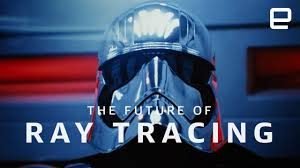 Ray tracing produces believably-good images, but it comes with a cost. A skilled CGI technologist can spend a full day developing one frame of a movie. That transpires to thousands of person-hours building one movie scene which has to pay back through box-office sales.
Ray tracing produces believably-good images, but it comes with a cost. A skilled CGI technologist can spend a full day developing one frame of a movie. That transpires to thousands of person-hours building one movie scene which has to pay back through box-office sales.
Gamers can’t afford the time and money spent on developing picture-perfect imagery that movie-goers demand. Because video games are more real-time experiences, the gamer technologists use a CGI technique called rasterization. It works on manipulating light through tiny polygons rather than pixels and produces “raster” images. The results aren’t as real, but it’s hundreds of times faster and far cheaper than ray tracing.
Face Lab and Their Fantastic Faces of Forgotten Folk
Face Lab is an interdisciplinary research group attached to the Institute of Art and Technology at Liverpool John Moores University. It’s headed by Professor Caroline Wilkinson who is a world-renown leader in craniofacial analysis, facial depiction and forensic art. With her group at Face Lab, Prof. Wilkinson specializes in facial reconstruction through computer generated imagery as well as building portraitures of population demographics.
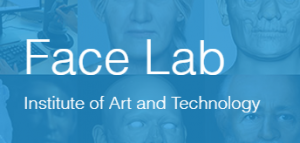 Besides contributing to forensic facial identification cases with law enforcement agencies like Scotland Yard, Interpol, the FBI and the RCMP, Face Lab finds time to have a little fun. They work with world-class museums to reconstruct realistic portraits from exhibit material. Using actual skulls of historical figures as well as authentic images, the Face Lab team applies highly-technical processes like 3D scanning, modeling and animating to known likenesses.
Besides contributing to forensic facial identification cases with law enforcement agencies like Scotland Yard, Interpol, the FBI and the RCMP, Face Lab finds time to have a little fun. They work with world-class museums to reconstruct realistic portraits from exhibit material. Using actual skulls of historical figures as well as authentic images, the Face Lab team applies highly-technical processes like 3D scanning, modeling and animating to known likenesses.
Recently, Face Lab took on a side project where they brought long-dead celebrities back to life with CGI technology. Their convincing result lets you look guys like Julius Caesar and Nero in the face. Here’s a peek at some fantastic faces of forgotten folk.
King Tutankhamun is the world’s most famous mummy. When his Egyptian tomb was opened in 1922, King Tut had been sealed away for over 3,200 years and the vault contained 5,000 dazzling artifacts. Some, like Tut’s gold funeral mask, are considered among the world’s most valuable antiquities.
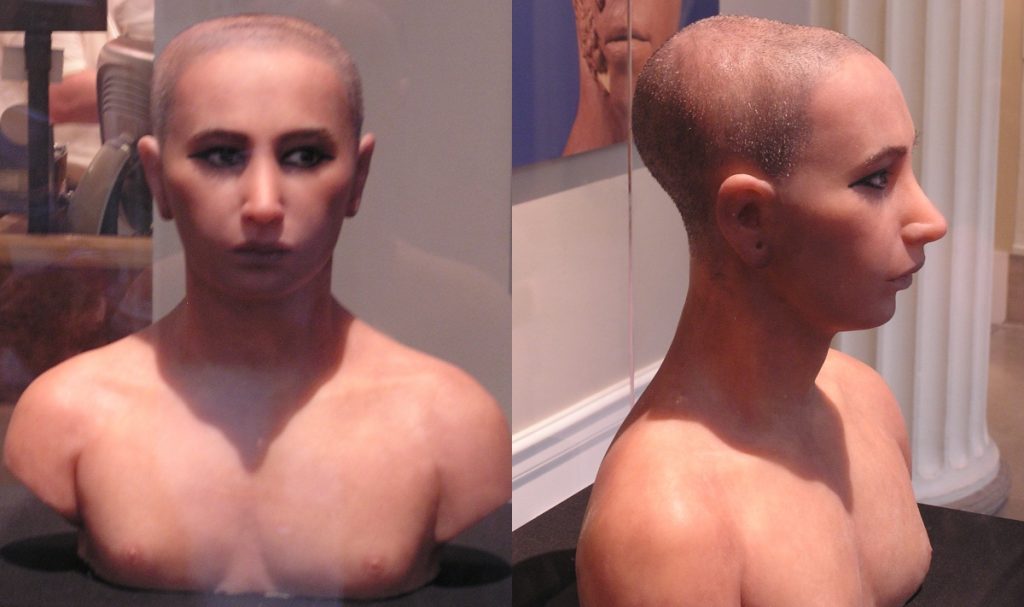 King Tut was an unusual Pharaoh. He ascended the throne in 1342 BC as an 11-year-old boy. Tut died in 1324 BC from suspicious circumstances which some scholars believe involved foul play. Whatever the death mechanism was, Tut was never well. All depictions of him show Tut seated including his hunting and archery activities.
King Tut was an unusual Pharaoh. He ascended the throne in 1342 BC as an 11-year-old boy. Tut died in 1324 BC from suspicious circumstances which some scholars believe involved foul play. Whatever the death mechanism was, Tut was never well. All depictions of him show Tut seated including his hunting and archery activities.
Recreating Tutankhamun was a classic case for Face Lab. They had his intact skull with preserved flesh to work with. The CGI technologists used 3D scans to build a life-like image and they used historical data from tomb paintings to get details like his skin and eye color bang-on.
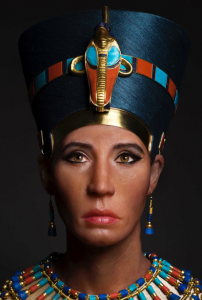 Nefertiti was Tutankhamun’s stepmother. She was Queen to Pharaoh Akhenaten and lived between 1370 and 1330 BC. This royal pair was ahead of their time in religious views where they recognized monotheism or worshiping only one god.
Nefertiti was Tutankhamun’s stepmother. She was Queen to Pharaoh Akhenaten and lived between 1370 and 1330 BC. This royal pair was ahead of their time in religious views where they recognized monotheism or worshiping only one god.
Historians differ their view on whether Nefertiti carried on in power after Akhenaten’s death and before Tutankhamun took over. They also debate whether Nefertiti’s remains have been conclusively found. Some feel she’s still out there, and others attribute a mummy called “The Younger Lady” as being the long-dead queen.
What all agree on is that a bust of Nefertiti is authentic. It’s a limestone/stucco artwork found in 1912 and depicts a beautiful woman that matches other known images of her. From the bust and related works, a marvelous CGI portrait of a life-like Nefertiti emerged.
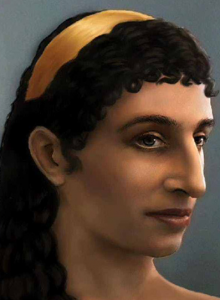 Cleopatra is perhaps the most famous woman in ancient history. That’s because of the mystique of her sexual power and masterful manipulation of men. It’s also because Cleopatra VII Philopator of the Ptolemy dynasty was beautifully portrayed by Elizabeth Taylor at the height of her acting career.
Cleopatra is perhaps the most famous woman in ancient history. That’s because of the mystique of her sexual power and masterful manipulation of men. It’s also because Cleopatra VII Philopator of the Ptolemy dynasty was beautifully portrayed by Elizabeth Taylor at the height of her acting career.
Cleopatra was the last ruler of Egypt’s Ptolemaic Kingdom. She lived between 69 and 30 BC and took the royal throne at the age of 18. Cleopatra was love-linked to Mark Antony and Julius Caesar although her relationships may have been more political than romantic.
There’s no doubt Cleopatra was a bright and shrewd lady. She spoke numerous languages and her survival strategy was one of keeping friends close with enemies even closer. Forces caught up with Cleopatra, and she was rumored to have committed suicide by taking poison. It’s popularly believed she was intentionally bitten by an asp.
Julius Caesar, by anyone’s standards, was a powerhouse in the old world. He was a Roman general/dictator responsible for the empire’s expansion ranging from England to Egypt. Julius Caesar lived from 100 to 44 BC and made major changes to Roman societal structure which didn’t sit well with some senior senators.
Many military historians consider Julius Caesar to be one of the world’s great strategists and tacticians. His military and political philosophy is entrenched as “Caesarism” and still used as a study model on how to, and how not to, over-extend. One of Caesar’s conquests was Cleopatra and their union produced a son.
Cleopatra and Julius Caesar’s relationship ended when he brought another woman to their Egyptian party. Caesar returned to Rome where he was assassinated by a conspiracy between rivals, one of which was Brutus (“et tu, Brute”). Today’s CGI techs were fortunate to have a host of Julius Caesar likenesses to work from.
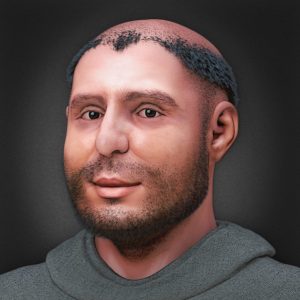 Saint Anthony of Padua might not be a household name to some. To others, he’s known as the patron saint of lost things. Anthony was a Portuguese Catholic priest famous for wise preaching and teaching during his short lifespan that spanned 1195 to 1231 AD.
Saint Anthony of Padua might not be a household name to some. To others, he’s known as the patron saint of lost things. Anthony was a Portuguese Catholic priest famous for wise preaching and teaching during his short lifespan that spanned 1195 to 1231 AD.
Saint Anthony was a masterful orator with an uncanny ability to heal the sick. He was intricately familiar with scriptures and explained bible quotations so the commoner could understand. Anthony’s frugal living and simplistic style related to people from peasants to the Pope.
Some strange things happened when Saint Anthony died. Legend has it that all the children cried as all the bells suddenly rang. The mystery goes deeper when his remains were exhumed 30 years after death. He’d turned into dust except for his tongue. Today, Saint Anthony’s preserved tongue is on public display in a Padua basilica.
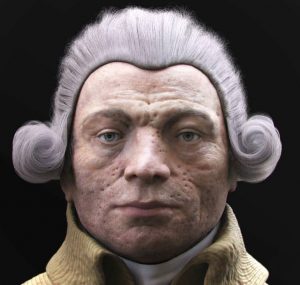 Maximilien Robespierre was a prominent force in the French Revolution of 1789. He was a lawyer and political activist with an outspoken voice for commoners. His criticism of church and state led to profound violence and the French monarchy overthrow.
Maximilien Robespierre was a prominent force in the French Revolution of 1789. He was a lawyer and political activist with an outspoken voice for commoners. His criticism of church and state led to profound violence and the French monarchy overthrow.
Although Robespierre was effective, he wasn’t a nice guy. His taste for power went beyond the public good, and he turned into a typical tyrant. Robespierre is now best known for his role in the “Reign of Terror” that took place between 1790 and 1794.
Maximilien Robespierre sent thousands of people to the guillotine. His turn came on July 28, 1794, when the tide turned and resistance fighters seized Robespierre, tortured him and cut off his head with the same system he used on so many. Today, Robespierre’s head is digitally reproduced through CGI technology.
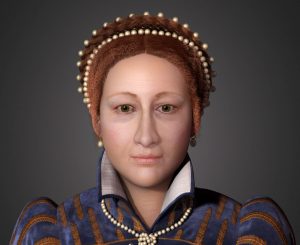 Mary, Queen of Scots, was the ruling monarch of Scotland from 1542 to 1567. She was six days old when her father, King James V, suddenly died and she acceded to the throne. Mary ruled by title rather than in person for her formative years and grew up in France where she married Francis, the Dauphin of France.
Mary, Queen of Scots, was the ruling monarch of Scotland from 1542 to 1567. She was six days old when her father, King James V, suddenly died and she acceded to the throne. Mary ruled by title rather than in person for her formative years and grew up in France where she married Francis, the Dauphin of France.
Mary returned to Scotland in 1561after her husband’s death and married her half-cousin to which they had a son. Mary was never accepted by Scotland’s real rulers, the regents, and she was imprisoned in 1567. She was forced to abdicate and her son, James VI took over the title as King.
History generally views Mary, Queen of Scots as a decent woman who didn’t stand a chance of exercising power. In 1587, she was convicted of a trumped-up plot to assassinate Queen Elizabeth I of England. Mary was beheaded for the “crime” and now is convincingly recreated in a 21st-Century image.
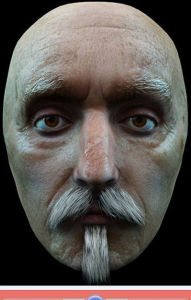 William Shakespeare may be the greatest writer the English language has ever known. The “Bard” invented or contrived over 1,700 unique words, phrases, cliques and sayings. Some are simple and familiar nouns like critic, bandit and lonely. Some are creative verbs like elbow, dwindle and swagger.
William Shakespeare may be the greatest writer the English language has ever known. The “Bard” invented or contrived over 1,700 unique words, phrases, cliques and sayings. Some are simple and familiar nouns like critic, bandit and lonely. Some are creative verbs like elbow, dwindle and swagger.
From Shakespeare’s birth in 1564 to his death in 1616, he produced 39 plays, 154 sonnets, 2 long narrative poems and uncountable verses. He’s the mind behind Macbeth, Hamlet and Romeo & Juliet. And Shakespeare wrote Othello, King Lear and A Midsummer Night’s Dream. Truly, William Shakespeare was a timeless talent.
However, some scholars doubt that Shakespeare produced all his attributed material. They also question what he really looked like as few Bard images exist. An engraving by Martin Droeshout is considered the most accurate Shakespeare portrait and it’s this piece that supports Face Lab’s CGI rendition.
Nero was the last Roman Emperor of the Judio-Claudian dynasty. He lived from 37 to 68 AD and died by suicide at the age of 31. Nero was a “Momma’s Boy” for his early years of rein, but turn-coated and had her murdered.
Tales of Emperor Nero’s instability abound. He seized Christians as slaves and had them burned more for cruel personal pleasure than serving public justice. Stories of Nero’s extravagance and tyranny finally caught up with the disturbed leader. The Romans revolted and rallied for Nero’s death.
During the Great Fire of Rome, Nero went to a rooftop and sang rather than pitching in with putting it out. Probably no one was more despised by nobles and commoners than Nero who took his own life. He left behind excellent sculptures and engravings that preserved his unquestionable likeness for eternity.
 Meritamen means “beloved of the god Amun” in ancient Egyptian. She was the biological daughter and then wife of Ramesses the Great who ruled as Pharaoh from 1277 to 1213 BC. Meritamen was highly-influential in Ramesses II’s court, and many different depictions describe her appearance.
Meritamen means “beloved of the god Amun” in ancient Egyptian. She was the biological daughter and then wife of Ramesses the Great who ruled as Pharaoh from 1277 to 1213 BC. Meritamen was highly-influential in Ramesses II’s court, and many different depictions describe her appearance.
Egyptologists have identified Meritamen’s tomb and sarcophagus with inscriptions worshiping her. She’s also portrayed on numerous statues and drawn in detail on papyrus tributes. However, the only physical evidence of Meritamen is her skull and the remainder of her mummy is missing.
There is enough of Meritamen’s cranium and mandible to tell she had a sweet tooth. Her teeth showed advanced decay for her age. There was also enough information on Meritamen from her skull, statues and drawings to generate a computer image of what was once apparently-attractive woman with exotically-braided hair.
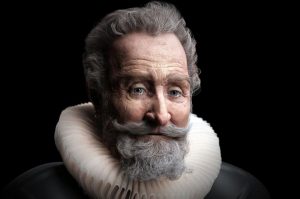 King Henry IV was a nice guy as far as medieval kings go. Known as “Good King Henry” and “Henry the Great”, he reined England from 1399 to 1413 AD. Henry was 19 when he took over from his grandfather, King Edward III, after having his cousin King Richard II deposed.
King Henry IV was a nice guy as far as medieval kings go. Known as “Good King Henry” and “Henry the Great”, he reined England from 1399 to 1413 AD. Henry was 19 when he took over from his grandfather, King Edward III, after having his cousin King Richard II deposed.
Not everyone liked Henry, though. Cousin Richard came back to bite him through successive assassination attempts. History records 12 attempts to dethrone King Henry IV. After Richard died of starvation in jail, rebellions against Henry increased to the point where he fled to France.
Henry IV died under somewhat suspicious circumstances after clandestinely returning to England in 1413. He was well embalmed and was in good shape when exhumed in 1832 to verify his identity. Today, King Henry IV’s image is brought to life through computer generation.
Nicholas Copernicus was way ahead of his time in scientific disciplines. He lived from 1473 until 1543 during a time when most scholars thought the world was flat. Copernicus proved them wrong, but he didn’t have an easy go of it.
Nicholas Copernicus was a true Renaissance man who thought outside the box. In fact, Copernicus thought out the universe and first described the true nature of our sun-centered solar system. Today, we know Copernican Heliocentricism as a universal model from which our current understanding of the cosmos rests on.
Sadly, Copernicus and the Catholic Church didn’t see eye-to-eye. The papal institute made him renounce his blasphemous betrayal, and he publicly went along with it to save his skin. Nicholas Copernicus is now a role model of brilliance, but no one ever complimented his looks.
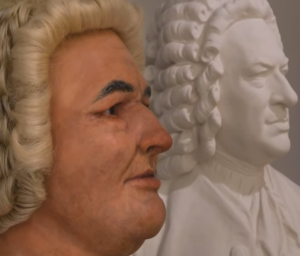 Johan Sebastian Bach was a German musical composer living between 1685 and 1750 AD. He’s best known for instrumental masterpieces like the Art of Fugue and vocal perfections such as the St. Matthew Passion. The 19th-century Bach Revival period recognizes the greatest western musical canon ever to live.
Johan Sebastian Bach was a German musical composer living between 1685 and 1750 AD. He’s best known for instrumental masterpieces like the Art of Fugue and vocal perfections such as the St. Matthew Passion. The 19th-century Bach Revival period recognizes the greatest western musical canon ever to live.
Bach was a child prodigy. He was born into a musical family and, by 11-years-old, Bach arranged Latin organ compositions for the church that set musical standards of today. He’s considered the epitome of mastering counterpoint and harmonic organization as well as larger vocal works like four-part chorales.
Johan Sebastian Bach died from eye surgery complications when he was 65. He was buried into obscurity but accidentally rediscovered during a church renovation. Bach’s skull, along with an authentic bust, gave the Face Lab crew strong support for generating his image in their computer.
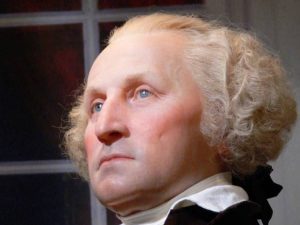 George Washington was the first American president and a founding father of the United States. Washington lived between 1732 and 1799 during the time of colonial revolt and the Revolutionary War. He served as a general of the continental army and a patriot leader.
George Washington was the first American president and a founding father of the United States. Washington lived between 1732 and 1799 during the time of colonial revolt and the Revolutionary War. He served as a general of the continental army and a patriot leader.
Following U.S. independence from the British crown, George Washington turned from military life and took up politics. He helped in drafting the constitution and implementing a strong government with fiscal responsibility set as a high priority. Legislators today could take lessons from George Washington.
George Washington is one of America’s most recognized faces. He’s on money, hung up in schools and used as a marketing symbol for integrity and independence. Here, Washington is recreated through computer generated imagery with details so clear that you can see the whites of his eyes and his five o’clock shadow.
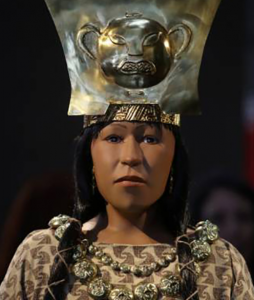 The Lady of Cao might not be as famous as George Washington, but she’s definitely fascinating. This lady was once a Peruvian aristocrat. Now, she’s a perfectly preserved mummy with a brilliant new image thanks to computer generation.
The Lady of Cao might not be as famous as George Washington, but she’s definitely fascinating. This lady was once a Peruvian aristocrat. Now, she’s a perfectly preserved mummy with a brilliant new image thanks to computer generation.
Archaeologists unearthed the Lady of Cao in 2005 when they excavated ruins in Peru’s El Brujo region. She’s estimated to have died around 400 to 450 AD and was buried with artifacts suggesting she came from the upper class. She was also interred with a lower-class woman who researchers suggest may be a human slave sacrifice to help her in the afterlife.
The Lady of Cao was so well-intact that there’s little left for guesswork. Her physical appearance was recreated by the Face Lab team with help from computerized tomography (CT) scans. The Lady’s image is that of a remarkable woman adorned in a regal headdress who was probably in her twenties when she passed.
Saint Nicholas of Myra was a Christian bishop from the Greek maritime city in Asia Minor. His lifespan stretched from 270 to 342 AD during which time he was known for generousness, especially towards children. He’s also renowned for miracles which explains his other title as “Nicholas the Wonderworker”.
Besides being the patron saint for sailors and merchants, Saint Nicholas is also the prime patron of children. Nicholas is attributed to his legendary habit of leaving secret gifts for kids which led to the modern-day “Sinterklass” practice.
Saint Nicholas has been called by different names at different times. He evolved into Saint Nick and then Santa Claus. We best know the jolly old elf’s description from the western world’s Coca Cola commercial. Professor Wilkinson and her Face Lab people took a different view of the fat old man in the red suit, and they brought life to the dead by computer generating this image from an ancient fresco of the child-loving man called Saint Nicholas.

